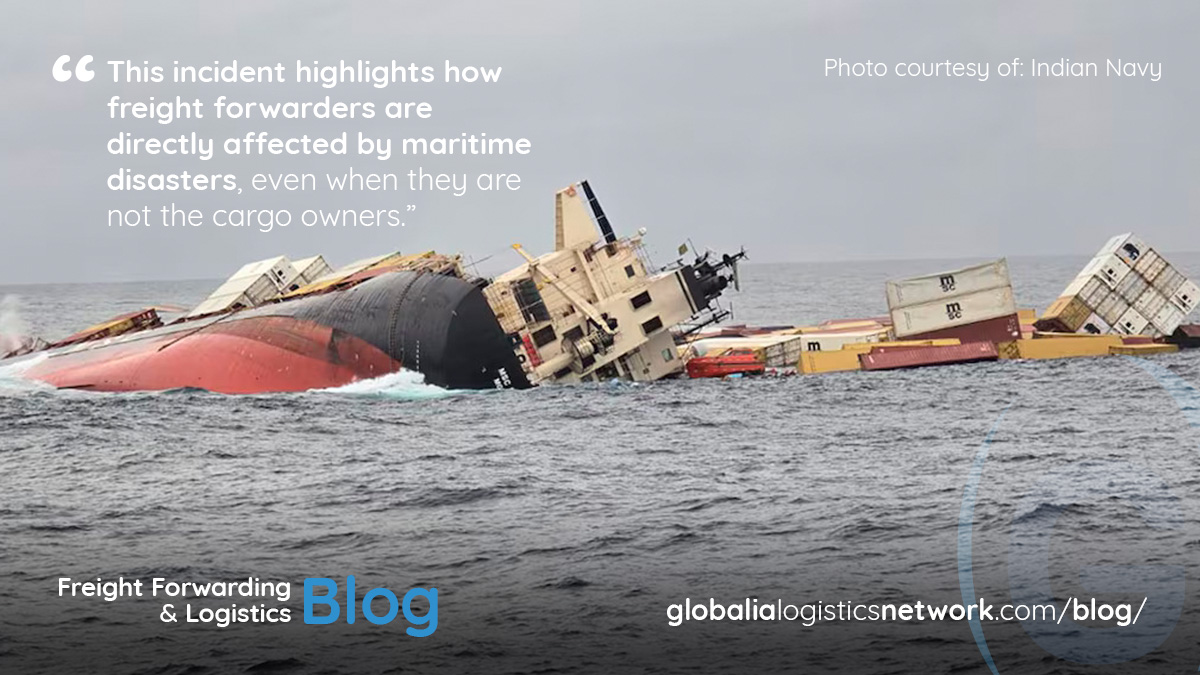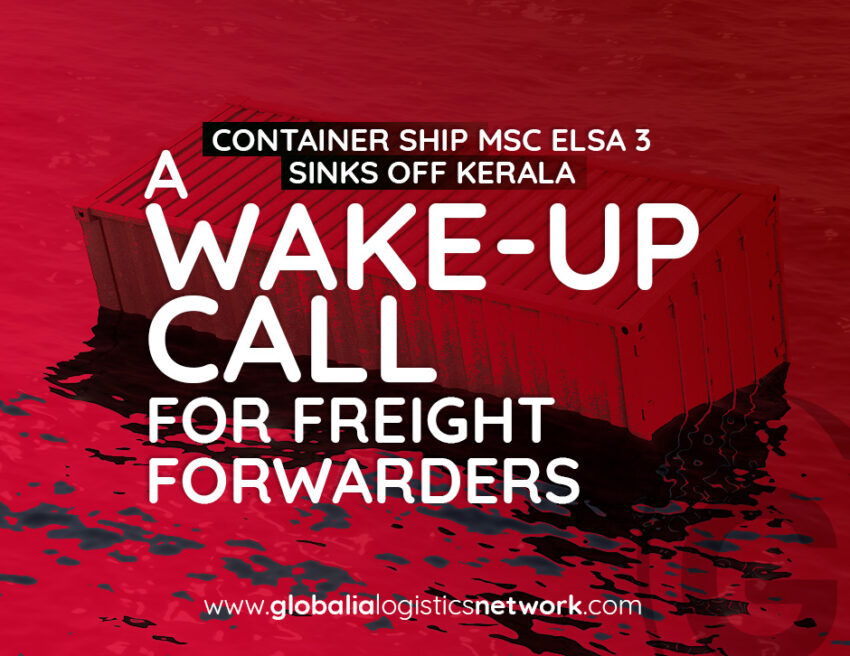On May 25, 2025, the maritime industry witnessed a significant incident when the Liberian-flagged container ship MSC ELSA 3 sank off the coast of Kerala, India. The vessel was traveling from Vizhinjam to Kochi when it developed a severe 26-degree starboard list caused by flooding in one of its compartments. Despite salvage attempts, the ship capsized approximately 38 nautical miles southwest of Kochi. Fortunately, all 24 crew members were rescued in a joint operation by the Indian Coast Guard and Navy. However, the cargo, environmental risks, and operational implications of this incident present important lessons for freight forwarders around the globe.

MSC ELSA: A dangerous cargo mix and environmental threat
MSC ELSA 3 was carrying 640 containers, including 13 that contained hazardous materials and 12 loaded with calcium carbide, a chemical that reacts dangerously with water. In addition to this, the vessel had over 80 metric tons of diesel and more than 360 metric tons of furnace oil onboard. The risk of a large-scale oil spill in the ecologically sensitive Arabian Sea region, especially during monsoon season, has prompted urgent containment efforts. Authorities are monitoring for leakage and have deployed pollution control vessels as a preventive measure. Containers have already started washing ashore in southern Kerala districts, leading to clean-up operations and public safety advisories.
For freight forwarders, this serves as a reminder of the potential consequences of transporting dangerous goods and the importance of understanding the full risk profile of any shipment—especially those involving chemicals or hazardous materials. The need for careful planning, precise labeling, and strict compliance with the International Maritime Dangerous Goods (IMDG) Code has never been more evident.
Implications for freight forwarders: Beyond insurance
This incident highlights how freight forwarders are directly affected by maritime disasters, even when they are not the cargo owners. Lost or damaged cargo, disrupted delivery timelines, container rerouting, and the sudden loss of access to critical feeder services can severely impact a forwarder’s reputation and client relationships. While marine cargo insurance can offer partial financial protection, it cannot fully compensate for the operational chaos and loss of trust that may result.
Furthermore, with supply chains becoming increasingly interconnected, the loss of even a relatively small feeder vessel like MSC ELSA 3 can lead to ripple effects. Delays in transshipment, rerouting of containers, and congestion at alternate ports all contribute to increased costs and administrative burdens. Freight forwarders must build flexibility into their operations and have contingency plans ready to respond swiftly in case of such disruptions.
The aging feeder fleet problem
One of the more serious concerns raised by this incident is the age and seaworthiness of feeder vessels operating in the region. Industry insiders have noted that many of these smaller ships are older and less equipped to handle rough seas or unexpected weather conditions, especially during the monsoon. The MSC ELSA 3 tragedy serves as a case study on the need for stricter regulation and inspection of regional container vessels.
Freight forwarders should be proactive in evaluating the vessels used by their ocean carrier partners, particularly on feeder routes. Requesting vessel specifications, safety records, and even crew training information can help logistics professionals make more informed choices and minimize risk. It is no longer enough to look solely at cost or transit time—cargo safety must be part of the conversation.
Strengthening risk management strategies
As the shipping industry faces growing environmental challenges, aging fleets, and heightened scrutiny, freight forwarders need to bolster their risk management protocols. This includes revisiting their standard operating procedures for shipping hazardous goods, reassessing contractual liabilities with clients and carriers, and investing in better cargo tracking and real-time communication tools.
Equally important is maintaining strong partnerships with reliable carriers and logistics networks that provide access to verified operators and comprehensive safety audits. Freight forwarders should also consider diversifying their routing options to prevent overdependence on a single corridor or shipping partner.
A call for greater vigilance and collaboration
The MSC ELSA 3 incident serves as a sobering reminder of the vulnerabilities in our global logistics systems. It underscores the urgent need for collaboration among shipping lines, freight forwarders, port authorities, and environmental agencies to improve maritime safety and preparedness. For freight forwarders, the incident is not just a news headline—it’s a call to take action, improve due diligence, and prepare for a future where agility and risk awareness are as critical as speed and cost-efficiency.
As the situation continues to evolve and cleanup operations proceed along the Kerala coast, freight forwarders across the globe would do well to watch closely, learn from the unfolding events, and adapt their strategies accordingly. Because in today’s interconnected world, what happens 38 nautical miles off the coast of India can ultimately affect supply chains continents away.


